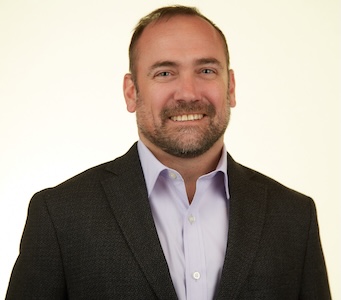
Adam Passaglia started his career as a runner on the floor of the Chicago Mercantile Exchange in 2000. He went on to found ARB Trading Group, a proprietary trading firm that today operates seven offices across the globe. A long-time friend and client of TT, Adam recently talked to me about the evolution of ARB Trading Group, how the market has changed, the increasing importance of artificial intelligence and how TT’s data warehouse will drive future business growth.
How did you get into trading?
I knew I was going to be a trader by the time I was in my early teens. I went to the University of Illinois and worked as a runner in the Eurodollar pit during the summers. I loved the energy and vibrancy on the trading floor. I graduated in May 2000 and started working in trading for a German-based firm in Chicago full-time the next month.
At that time, the CME hadn’t gone electronic, but in Germany the Deutsche Terminbörse (DTB), which is now Eurex, had launched with an electronic trading platform. For me, that was a game-changer and I wanted to trade where I could be the quickest. As a result, I moved to Frankfurt in July 2001 to be closer to the DTB servers.
In January 2003, I moved back to Chicago and launched my own prop firm. In 2012, I met [ARB Trading Group co-founder] Amnon Baazov, who was trading on the floor of the Montréal Exchange with a group of around 15 traders. We merged our two entities together and both stepped back from day-to-day trading to concentrate on building a global proprietary trading firm.
How did India become part of your global strategy?
In 2013, Amnon and I were looking at where we could find the deepest sources of talent to grow our firm. We went to India, and over the course of three days, we met more than 100 traders; it was immediately clear that this was a place where we could expand operations.
We have since opened offices in India and across the world and employ around 250 traders today. ARB expanded into asset management a few years ago and today has over $200 million in AUM. We also operate a fund management platform that helps emerging managers launch a hedge fund.
How has your approach to technology evolved since those early days?
The skill sets it takes to trade today are very different from what they were back in the early 2000s. Back then, I was doing everything manually—writing out calculations and tracking everything on spreadsheets.
Today, our traders have access to all the data they need. Our job is to provide them with the tools, data and access to markets.
We are not looking to take part in the latency arms race. We use latency efficiently and effectively, but we don’t chase it; we know who the winners will be in that game, and we are not trying to compete with them.
Instead, we are focusing on being as competitive as we can in terms of latency and using data and analytics to gain an edge. Data is a key component of what we do today and where we are currently investing.
You’ve recently partnered with TT on your data investment strategy. What was behind that?
Our partnership with TT on the data warehouse is both regulatory and strategic. Some exchanges require us to keep trade data, and this partnership with TT allows us to maintain that data.
But it also enables us to launch other initiatives.
We have some plans already in terms of what we are going to launch. But the full scope of how we will work with TT and your data warehouse will only emerge over time.
The partnership certainly opens up our R&D, enhances performance monitoring and gives us much greater access to deeper analytics that will drive our business growth in the future.
How are you using artificial intelligence (AI)?
We use AI tools to maximize operational efficiency in the workplace in areas such as communication and R&D. We also use machine learning models that learn to adapt to the market. But we don’t deploy AI-based trading bots or neural networks for trading.
It’s still early days in AI, and there are a lot of unknowns—especially around regulation. We’re closely watching developments and working with organizations like FIA PTG, but we’re not looking to be the pioneers of AI-driven trading models.
How has TT supported the growth of ARB?
I’ve been using TT since the early 2000s in Frankfurt and so have had a long affiliation with TT. When Keith Todd [Deputy Chairman and former CEO of TT] shared his vision [in 2022] for TT as a multi-asset, global trading platform, bringing all the different tools together, it really aligned with our global approach.
In the past, we had different platforms for each asset class—futures, options, equities—even different systems for different regions like Brazil.
Now, TT is bringing everything together and offering the ability to trade across asset classes on one platform with all our data in a single place. This has the potential to offer real operational efficiency, which is so important as costs continue to rise.
What’s next for your business? How are you turning industry challenges into opportunities?
It’s tough being small in this business, and we are looking to work with smaller groups across the globe. Our background as traders helps us relate to and support the groups we work with.
As we continue to grow, we’re actively expanding in Europe under a MiFID II-regulated entity so we can market-make on European exchanges without being restricted by third-country limitations. We’re also currently working on a project in South Africa. You’ll be hearing a lot more about ARB Trading Group in the coming years!
TT’s data warehouse allows you to store and access all of your transactional data for a variety of compliance and business intelligence needs. To find out more about how it can optimize your regulatory and business strategies, contact your TT representative.

